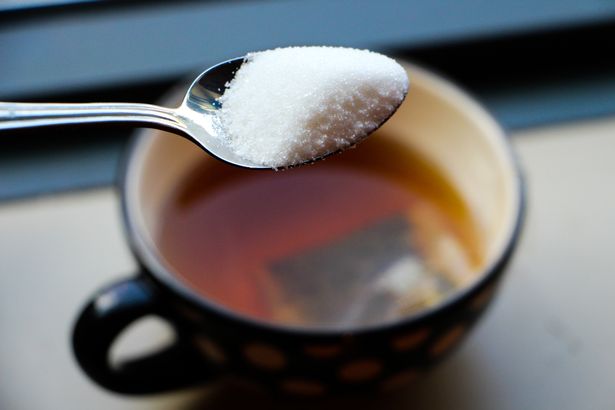The UK has recently found itself embroiled in a heated debate around the possibility of banning sugar in its prisons. Proponents argue that such a move would improve inmates’ overall health and reduce obesity rates, while opponents question the feasibility and ethics of this approach.
It may also seem like a harmless ingredient found in countless food products, but it can also pose a serious security risk when misused. This is particularly true in the context of prisons, where access to potentially dangerous materials is strictly controlled. One such danger lies in the potential for sugar to be used in the creation of a homemade napalm-like substance. This article will explore the dangers of sugar in prisons, focusing on how it can contribute to the risk of napalm attacks.
In this article, we delve into the arguments on both sides, as well as the potential alternatives to a sugar ban in UK prisons.
The Case for a Sugar Ban in UK Prisons
A. Health Benefits
- Reduced obesity rates: With obesity affecting an alarming number of inmates, eliminating sugar could help address this pressing health issue. Obesity is linked to numerous health problems, including heart disease, diabetes, and certain cancers.
- Improved mental health: Some studies suggest that high sugar intake can negatively impact mental health, exacerbating depression and anxiety. A sugar ban could potentially improve the psychological well-being of inmates.
- Lower healthcare costs: By addressing obesity and related health issues, a sugar ban could lead to reduced healthcare costs for the prison system.
B. Discouraging Smuggling
- Reducing contraband: Banning sugar might help curb the smuggling of sugary items into prisons, reducing security risks and promoting order.
C. The Napalm Threat
Napalm is a highly flammable gel that was used extensively during the Vietnam War, causing severe burns and widespread destruction. Though the production and use of napalm have since been regulated, it is still possible to create similar substances using household items. In prisons, the misuse of sugar for this purpose poses a significant security risk.
A basic recipe for homemade napalm involves mixing sugar with a flammable liquid, such as gasoline. The sugar thickens the mixture, allowing it to adhere to surfaces and burn for longer periods. Although this crude concoction may not have the exact properties of military-grade napalm, it still has the potential to cause considerable harm.
In prisons, sugar is widely available as it is an ingredient in many food items. Inmates can accumulate sugar from various sources, such as commissary purchases, food served in the cafeteria, or care packages from family and friends. Despite efforts to control and monitor the distribution of potentially hazardous materials, it can be challenging to prevent inmates from stockpiling sugar.
The Case Against a Sugar Ban in UK Prisons
A. Practical Concerns
- Enforcement challenges: Ensuring compliance with a sugar ban would require substantial resources and manpower, potentially diverting attention from more pressing security concerns.
- Inadequate alternatives: A sugar ban would necessitate the introduction of alternative sweeteners, some of which carry their own health risks.
- Violent attacks: the ban on sugar would see attacks of this nature decrease quickly and significantly.
B. Ethical Issues
- Personal autonomy: Critics argue that banning sugar infringes on inmates’ right to make personal choices regarding their diet and well-being.
- Punishment vs. rehabilitation: A sugar ban may be viewed as an unnecessary and punitive measure, rather than one aimed at rehabilitation and reintegration into society.
Potential Consequences
The potential consequences of sugar-based napalm attacks in prisons are dire. Such attacks could lead to:
- Severe injuries and fatalities: Napalm-like substances can cause devastating burns and pose a serious risk to the health and safety of inmates, staff, and first responders.
- Infrastructure damage: Fires caused by homemade napalm could result in extensive damage to prison facilities, requiring costly repairs and potentially displacing inmates.
- Psychological effects: The fear of napalm attacks can create a stressful environment for both inmates and staff, impacting their mental health and overall well-being.
Preventive Measures
To mitigate the risk of sugar-based napalm attacks in prisons, authorities should consider implementing the following measures:
- Limiting access to sugar: Reducing the availability of sugar in prison facilities, monitoring its distribution, and prohibiting or restricting its use in care packages.
- Education and awareness: Educating prison staff and inmates about the dangers of homemade napalm and the potential consequences of its use.
- Surveillance and intelligence gathering: Monitoring and gathering information on potential security threats within the prison population, including the misuse of sugar and other potentially hazardous materials.
- Swift disciplinary action: Enforcing strict penalties for those found to be involved in the production or use of homemade napalm, deterring others from attempting similar acts.
The misuse of sugar in prisons to create homemade napalm-like substances is a grave concern that poses significant risks to the safety and well-being of inmates and staff. By implementing preventive measures and raising awareness about the dangers of such actions, authorities can work to reduce the likelihood of napalm attacks and maintain a safer prison environment.







